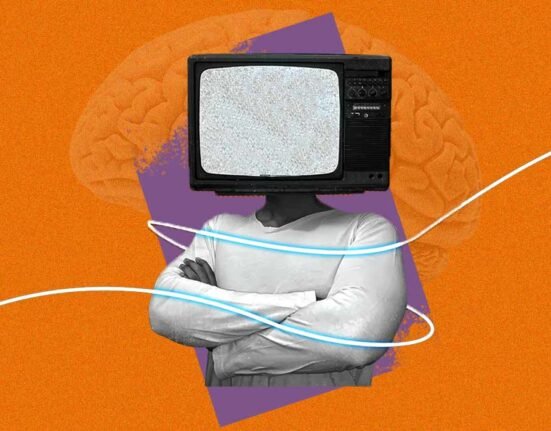In today’s fast-paced world, where technology often dominates our lives, the concept of mindfulness is gaining importance. Digital mindfulness, the practice of using technology to enhance mental well-being, offers a modern solution to the challenges of our digital age. By integrating mindfulness techniques into daily routines through apps and online platforms, we can cultivate a sense of calm, reduce stress, and improve emotional resilience. This approach allows us to embrace technology in a way that nurtures our mental health, providing accessible tools to stay grounded and focused amidst the chaos.
The need for a halt to the Rat Race
Phrases like “always growing,” “hustling,” and “working like a trojan” reflect how people are neglecting the importance of taking breaks. These pauses are essential for adopting a mindful approach to daily activities.
Mindful beginning and its Digital Journey
Buddhism introduced us to a non-judgmental perspective, helping us see things as they truly are. This philosophical approach emphasises the ability to remain present with oneself while being aware of the surrounding circumstances and environment. In the early 1980s, Jon Kabat-Zinn developed the first mindfulness-based intervention (Hofmann & Gómez, 2017). By the 21st century, psychologists and therapists began embracing digital mindfulness practices. In 2021, the global mindfulness meditation app market was valued at $97.6 million, with projections showing significant growth shortly (Gupta & Samant, 2022). Numerous meditation apps, including Headspace, Buddhify, Happier, Calm, and Smiling Mind, have been developed to support this shift.
Why are people suddenly into them?
1. Problem Solvers in the pandemic
In 2019, 1 in every 8 people, or 970 million people around the world, were living with a mental disorder, with anxiety and depressive disorders being the most common. This bar had increased significantly in 2020 because of COVID-19, and more digital dependency was experienced by people (WHO). Every set of economy has started on digital platforms. The wellness market has also come up with meditation apps to indulge in mindfulness interventions.
Humans have always been trying to solve problems through technology, but some events like COVID-19 could shake the world because no one had clarity about the consequences. That leads to tremendous fear of uncertainty. Mental health awareness has increased during periods of social isolation. People understood the importance of the human touch, relationships. The number of downloads increased after COVID-19, and more people sought help from meditation apps. More than 2500 meditation apps have been released between 2015-2020.
2. Conveniently accessible
Practising meditation isn’t just about finding silence and space; it also requires enough time to truly absorb the calmness of the environment. Digital mindfulness, through meditation apps, brings that convenience to your fingertips, allowing you to access a moment of calm anytime, anywhere.
3. Personalisation
Every human mind works differently, reacts differently, and their needs are also different at different times. These apps also personalise their services according to users, just like a personal trainer in a gym, here it is a mind trainer. Your previous choices, history, progress and then your current emotional state are all being analysed and tracked by these apps to provide personal recommendation plans.
4. Reward system
Getting a badge or star for being focused for a longer time is also an interesting fact about these apps. Cultivation of some discipline in daily routine is achieved by the reward system. They motivate people to take action and maintain consistency with them.
5. Commercialisation
The rise in the digital wellness market is also because commercial interest has increased. Globally, many businessmen and psychologists, mental health workers, and developers have worked collaboratively to reach a wider customer base.
Impact on mental health
Studies in 2022 highlighted the positive impact of mindfulness exercises guided by meditation apps on mental and physical health. The stress, anxiety, and depression can be reduced via these apps. Meditation is an inherently relaxing activity, it leads us to self-monitoring habits. To achieve something in our lives we have to be accountable for our own actions and for that digital mindfulness is necessary. They push you towards routined, disciplined lives which can teach you how to regulate emotions and be resilient in hard times.
Digital Mindfulness in Education
Smiling minds, Mindful powers, Breathe, Think, Do With Sesame are such applications made for students. Stress management and emotion regulation are not just adult things; now parents and teachers have to make an effort for school-going children or adolescents. Excessive exposure to smartphones and social media among the young population can create the need for digital mindfulness. Counselling is one of the services in online mindfulness therapy. Counselling aims to overcome mental health problems experienced by students. Other internet-based mindfulness programs present educational content. All of the digital services improve attention span, concentration, and productivity, and also help reduce negative emotions in students (Yosep, Suryani, 2024).
Read More: 10 Meditation Techniques Everyone can (and should) Explore
Conclusion
The rise of mediation apps and digital mindfulness changes the people’s perspective on how to take care of the mental health of others and oneself while engaging in digital platforms. Despite some concerns regarding privacy, profit-oriented actions, and validity, the response from the users is positive. It is one of the accessible and scalable solutions to the growing mental health crisis. If we use the technology mindfully, then it is sure not to be a curse to human minds but a boon.
FAQs
1. What is the point of meditation apps?
Meditation apps help you learn and master various meditation skills like focused deep breathing, mental clarity, and being present.
2. What are the benefits of meditation and mindfulness?
Meditation and mindfulness practices offer numerous benefits for both mental and physical health, including stress reduction, improved sleep, and enhanced emotional regulation. They can also improve attention, focus, and cognitive function while promoting a sense of calm and well-being.
3. What is the goal of mindfulness?
To make one aware of oneself and others.
References +
- Hofmann, S. G., & Gómez, A. F. (2017). Mindfulness-Based Interventions for Anxiety and Depression. The Psychiatric clinics of North America, 40(4), 739–749. https://doi.org/10.1016/j.psc.2017.08.008
- Walsh, K. M., Saab, B. J., & Farb, N. A. (2019). Effects of a Mindfulness Meditation App on Subjective Well-Being: Active Randomized Controlled Trial and Experience Sampling Study. JMIR mental health, 6(1), e10844. https://doi.org/10.2196/10844
- Wu, J., Ma, Y., Zuo, Y., Zheng, K., Zhou, Z., Qin, Y., & Ren, Z. (2022). Effects of Mindfulness Exercise Guided by a Smartphone App on Negative Emotions and Stress in Non-Clinical Populations: A Systematic Review and Meta-Analysis. Frontiers in public health, 9, 773296. https://doi.org/10.3389/fpubh.2021.773296
- Yosep I, Suryani S, Mediani HS, Mardhiyah A, Ibrahim K. Types of Digital Mindfulness: Improving Mental Health Among College Students – A Scoping Review. J Multidiscip Healthc. 2024;17:43-53 https://doi.org/10.2147/JMDH.S443781













Leave feedback about this